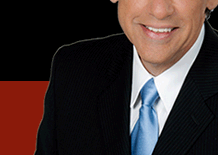 WHEN
LESS IS MORE WHEN
LESS IS MORE
By Steve Parker
Motorcycles offer all the high-tech of cars and then some
Anti-lock brakes, electric start, turbochargers and fuel injection,
satellite navigation systems, the most sophisticated cylinder
heads in the world, carbon fiber reinforced pistons and other
internal engine bits for lightness, great mileage and speed,
carbon fiber, fiberglass and exotic plastics body parts, powerful
stereos that’ll knock you and your passenger out of their
seats, halogen lighting with enough candlepower to light up
a new moon Baja at night, adjustable suspension setting front
and rear --- it’s all waiting for you at your local motorcycle
shop.
The neat little secret of motorcycle technology has always
been, and very much remains, that two-wheeled vehicles are
the test “mules” of what eventually winds up on
mass-produced four-wheelers.
The first five-valve cylinder heads were called “Genesis”
and were seen on Japanese Yamahas well before Audi ever offered
them to the car-buying public. Anti-lock brakes were put on
German BMW motorcycles before most cars or trucks ever considered
offering them.
Likewise, the “flat” cylinder layout still common
on BMW bikes presaged the use of that engine style in Porsche,
Subaru and other cars of today. In the mid-‘60s, Toyota
brought out a sports car called the S2000, which was campaigned
in this country by the legendary Dan Gurney, a car which was
built under contract to Toyota by Yamaha. And Yamaha built
the powerful V6 engine in the SHO high-performance version
of the Ford Taurus. Even “all-wheel” (two-wheel)
drive and automatic transmission motorcycles have found their
place in the pantheon.
Of course with the upside of the popularity of bikes, there’s
a negative, too. With 2002 sales up a remarkable 9.4 percent,
the U.S. motorcycle market is celebrating 10 consecutive years
of rising sales. In 2001, new unit motorcycle sales topped
850,000 in the fourth straight year of double-digit increases.
Continued strong demand for two-wheelers beat that mark in
2002, with total motorcycle sales of more than 937,000, according
to the Motorcycle Industry Council (MIC). Total car and truck
sales are about 16 million annually, so almost one million
two-wheelers sold is a pretty good figure.
Here’s the bad news: More machines, fewer well-trained
riders, more wrecks. Motorcycle fatalities rose for the fifth
consecutive year in 2002, to 3,276, the most since 1990. That
compares with a low of 2,116 in 1997. MIC offers a series
of great training programs around the nation. Find out where
there’s one near you by visiting www.MIC.org. Your local
dealer will also have info on MIC.
Honda was the first motorcycle maker with the guts to produce
a “superbike” more than 30 years ago, the world’s
first mass-produced large displacement sports machine.
Kawasaki and their 900cc Z1 model grabbed the hearts of minds
of fast riders and their police counterparts all over America
(see any episode of “ChiPS” for a look at the classic
Z1 in full cop trim). Kawasaki, in the ‘70s and ‘80s,
produced three-cylinder, two-stroke sport bikes so fast and
unpredictable that the handlebars came standard with adjustable
steering dampers!
Suzuki has become known for their bare-bones “naked”
street and sport racers, blindingly fast machines which strike
fear into anyone who has ridden them, equipped as they are
with what even veteran bikers call a “severe pucker factor”.
Suzuki was the only Japanese manufacturer to produce a consumer
version of a rotary-powered motorcycle, a heavy, super-fast
and expensive piece of technology which never caught on. Racing
sanctioning bodies made it illegal because they didn’t
know in which class to put it, and finally Great Britain’s
Norton borrowed the unique engine technology to use on their
police pursuit motorcycles.
I road-tested a Suzuki rotary (the RE-5, if I remember right)
for a magazine when they first came out, and today there’s
an RE-5 in the Petersen Automotive Museum in Los Angeles.
Talk about feeling old! But motorcycling technology changes
much faster than in the automotive world.
When Mazda introduced their Miata in 1989 as a 1990 model,
it was hailed as a sports car with all the fun, good looks
and power of a classic British roadster, but with the dependability
of Japanese machinery. It was, in essence, an MG which would
start every morning. Almost a quarter century later, Miata
is still going strong.
Miata might have taken a lot of people by surprise, but to
anyone who had been involved in motorcycling since the ‘60s,
it was just the natural progression of things.
In 1969, Honda shocked the motoring world with the introduction
of the first superbike, the CB750. Producing almost 70 horsepower
from a four-cylinder engine, the machine was the first street
bike to use a front disc brake, turned out almost as much
horsepower as the then-state-of-the-art MV Agusta racer from
Italy, came equipped with turn signals (then a motorcycle
novelty) and cost, at the time, as much as a Volkswagen Beetle.
These were the days when Europe’s Triumph, BSA, MotoGuzzi,
BMW and of course, the USA’s stalwart Harley-Davidson,
ruled the roads and the world’s race tracks.
Japanese machines were small, cute and noisy, not meant to
be taken seriously by anyone other than college students and
bongo-banging Beatniks. While the Honda “Dream”,
introduced in 1959 as a 305cc model, saw the phrase “You
meet the nicest people on a Honda” go a long way towards
changing the “outlaw” image motorcycling had acquired
since the end of WW II, it was that CB750 which brought Japanese
mass production, reliability and safety to the forefront among
two-wheelers.
Today, motorcycling is dominated by the major Japanese manufacturers,
a smattering of European makers (though that British industry,
like their sports car market, is all but gone), and America’s
Harley-Davidson remains a powerful contender in the marketplace.
A company called Buell, which started out making very expensive
custom bikes for the high-priced set (known as Rubbies ---
Rich, Urban Bikers), is now a division of Harley.
Harley itself, after going through several iterations in
the past decade, is once again headed by members of the original
founding families of the company, and the quality of their
latest machines is on a par with some of the best in the world.
And anyone who has spent more than 5 minutes in motorcycling
knows that Harleys are not known for their reliability. Harley
now has their own museum in Milwaukee, the company is downright
respectable, and the engine in their radical new V-Rod was
designed by ----gulp! --- Porsche!
Customers worldwide gladly pay $75,000 for Harley models
which cost $20,000 in the US, and the site of 70-ish Japanese
couples cruising the road to the top of Mount Fuji on their
Electra-Glides, wearing full leathers and riding gear, is
surreal, but believe me, I have seen it in person.
The company sponsors the Love Ride, one of the biggest fundraisers
for the Muscular Dystrophy Association, a southern California
event which annually draws more than 20,000 bikers, all led
by biker enthusiast Jay Leno. (I did a POPULAR MECHANICS magazine
piece on Leno’s motorcycle collection before he got THE
TONIGHT SHOW gig. After he signed that huge contract, he started
collecting cars in earnest! But he always did all the mechanical
work on the bikes himself, favoring obscure makes like the
British Brough.).
Small-ish Euro makers like Aprilia and Ducati still serve
as the “Ferraris” of the two-wheel world, high-priced,
super high-performance makes which made their bones on the
world’s race tracks.
There are even some all-new start-up American motorcycle manufacturers,
some using well-known names like Indian, and veteran auto
racing champion Dan Gurney has gotten into the act with a
powerful, comfortable bike dubbed Alligator.
Sales are stronger than ever, the choice for buyers is stunning,
there are as many niches in the two-wheeled world as there
are in the car and truck markets, if not more. Sportbikes,
sport/tourers, dual-purpose, naked sport bikes, and standards
are for sale. Even scooters like Vespa (which means “wasp”
in Italian) are making a strong comeback in the USA.
What happened? We did. Baby Boomers.
“We” got older, we want to stay young, and in addition
to buying that classic Mustang which we always wanted when
we were in high school, a lot of us are adding a two-wheeled
conveyance to our stable.
And we want to feel rough and tumble tough. Sometimes a wimpy
SUV just won’t do the trick. Darn the kids! Get out on
the open road by yourself or with your woman (and plenty of
women hit the road with their men on the back, too!). There
truly is something special about hopping on a Harley, firing
that big twin up, feeling that exhaust note screaming “potato,
potato, potato” rumbling through your body and the neighborhood,
which is quintessentially American. Hop on a Harley and the
first things you feel like doling are drinking a beer and
outrunning a cop. It’s in our genes, I think.
What are we buying? Big, fast motorcycles. While they are
sure fun to ride and look at, that’s not always the best
idea for the first-time rider. Falling off a motorcycle, even
a stationary one, will hurt. All larger displacement bikes
weigh in excess of 600 pounds. Having one of these brutes
land your leg or hip or arm can spell disaster. What would
be written off as a minor fender-bender in a car can easily
become a fatal accident on a bike, especially if the rider
is not wearing proper safety gear.
But, the big bikes remain the most popular on the sales charts.
Dan Gurney’s Alligator machine is a case in point of
a small manufacturer using technical prowess to answer some
of the safety questions.
Older folks, the ones buying the most bikes, tend to be a
little heavier and shorter than they were in their youth.
This means a tall riding position is really a danger, making
the machine hard to control, especially when stopped. It’s
crucial that both feet can easily touch the ground when you’re
on a bike and not moving.
Gurney’s Alligator is built specifically to address
this situation, with the fuel tank under and behind the rider,
making for an exceptionally low center of gravity.
Take it from me, as a short guy who has dropped a lot of
motorcycles in the past 30 years, the Alligator is tough to
fall from! Gurney’s Alligator is powered by a single
cylinder 710cc modified Honda engine producing about 70 horsepower
(the same output as the original Honda CB750 in 1969). Contact
the ever-young Gurney, the only man to ever win a Formula
1 race in a car he designed, built and drove, at All-American
Racers in Santa Ana, CA at www.AllAmericanRacers.com for more
info.
Another bike getting a lot of attention is the Harley-Davidson
V-Rod, their first really all-new machine in over 30 years.
In 2001, Harley stunned the cruiser world with its $17,995
VRSCA "V-Rod" A 106hp/72LbFt, modern liquid cooled
1130cc (60 cubic inches) powered, DOHC, 4-valve per cylinder
V-twin, in a raked-out, trick-looking dragster-ish chassis.
Harley knows who their buyers are, too, and the seat height
on the powerful V-Rod is a mere 26 inches, making it suitable
for tough little beer-drinking guys (like me!). (More info
at www.Harley-Davidson.com).
It is the “sport/tourers” which hold the most
fascination for many buyers. These are large displacement
machines, usually four cylinders (though the Honda Gold Wing
is a 6 displacing almost 2 liters at almost $20,000!) with
the comforts of a tourer but some of the speed, handling and
braking capabilities of a sports machine.
A few of them are gorgeous works of art, as well, such as
the BMW R1150R (German, and featured in a recent James Bond
film and priced at a cool 10 grand) and the Moto Guzzi (Italy)
Stone Touring P.I. (no, I don’t know what the name means
--- but the machine is pure eye candy!).
Machines from resurrected companies like Royal Enfield (the
$5,000 500cc Bullet) and Indian (Roadmaster and Vintage, both
at near $25,000 with engines displacing 1,700cc’s) are
sweet to gaze upon, even though their only ties to the original
companies are their names.
A new machine assembled in America from parts worldwide is
the Victory, at $15,000 and 1,500cc’s, a powerful retro-styling
statement. And almost any motorcycle bearing the name Ducati,
Aprilia or Triumph will set you apart from the pack when it
comes to that Sunday cruise to the Rock Store on Mulholland
Drive in the Santa Monica Mountains.
I first learned to ride on a Triumph Tiger Cub in about 1973.
My first bike was a Yamaha Enduro 175, and soon after that,
I moved up to a Honda CB550-4, a machine I still own and which
at the time (1976) was the perfect size and power for me as
a relatively new rider. The difference between those machines
and today’s offerings are simply astronomical; really
the only thing they have in common is a gear shift lever and
two wheels.
About the Author
Steve Parker is a two-time Emmy Award-winning journalist living
in Palm Springs, CA, where he produces and hosts automotive-related
radio and TV shows) Steve Parker THE CAR NUT / THE CAR DUDE.
Over 30 Years of Emmy-Award Winning Automotive Journalism on
TV, radio, in newspapers and magazines. |

















